Updates/Changes
IMPORTANT NOTICE
WIS Users - Great Lakes: Lake Huron
- November 2025: The 2024 Hindcast has been applied.
- July 2024: The 2023 Hindcast has been applied.
- September 2023: The 2022 Hindcast has been applied.
- March 2023: The 2021 Hindcast has been applied.
- October 2022: The 2020 Hindcast has been uploaded. Most nearshore stations should have the full complement from 1979-2020.
Older updates
- 05/12/2015: The Wave Information Study completed a one year update (1 January 2013 through 1 January 2014) of the Lake Huron wave hindcast. All output products were regenerated and posted. The continuous hindcast zipped file now spans the period from 1979 through 2014.
- 11/04/2013: The Wave Information Study is pleased to announce the posting of an update to the Lake Huron Wave Hindcast. The period of record now spans from 1979 through 2012 (the addition of 2010 through 2012). All products have been re-evaluated with the additional 3-yr update to the Lake Huron Hindcast.
- 01/19/2012: The Wave Information Study is pleased to announce the posting of the new Lake Michigan Wave Hindcast. The period of record spans from 1979 through 2009. Hourly wave estimates (included are wind speed and direction) are provided and downloadable. All previous versions of the WIS Lake Michigan Hindcast have been replaced with the vastly improved hindcast.
The wave model WAM (see Komen et al., 1994) is the technology used for the simulations. The model was run on a 0.04-deg fixed spherical grid. Shallow water effects were applied. Wind fields derived from the Climate Forecast System Reanalysis (CFSR, 1979 - 2010, Saha et al., 2010, AMS BAMS, Aug 2010, 1015-1057). The wind fields were spatially interpolated to the wave model grid. The temporal resolution of the CFSR wind fields was 1-hr. During the winter months daily ice concentration fields are also applied to the wave model simulations using the NOAA Great Lakes Ice Atlas, Assel, 1973, http://www.glerl.noaa.gov/data/ice/atlas/ ). A total of 441 special output locations were selected covering the US and Canadian coastlines. Extensive evaluation of the model results were performed using all available point source measurements (e.g. NOAA/National Data Buoy Center and Environment Canada)
Full documentation of the hindcast including model set-up wind, ice processing and the evaluation will be forthcoming.
Users must note there were five stations in the Lake Huron data set (ST93042 through ST93046) in the southern portion of Saginaw Bay where the extreme analysis failed. There are two primary reasons for this. First is that the locations are situated in an area where the incoming wave energy is low. The second is that the water depths at these locations are extremely shallow. Both limit the applicability of the peak over threshold analysis in the selection of a unique storm sequence.



 Home
Home
 Project Overview
Project Overview WIS Portal
WIS Portal
 Publications
Publications Updates
Updates

 Contact Us
Contact Us